-
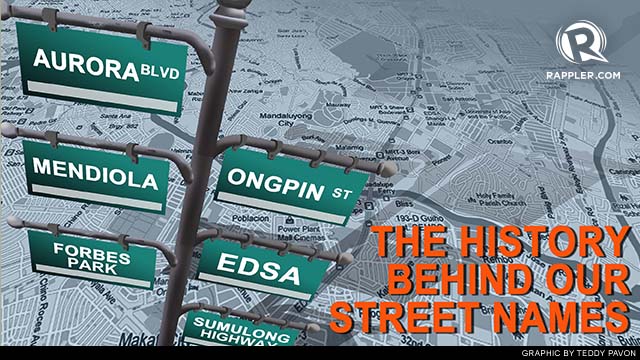
-
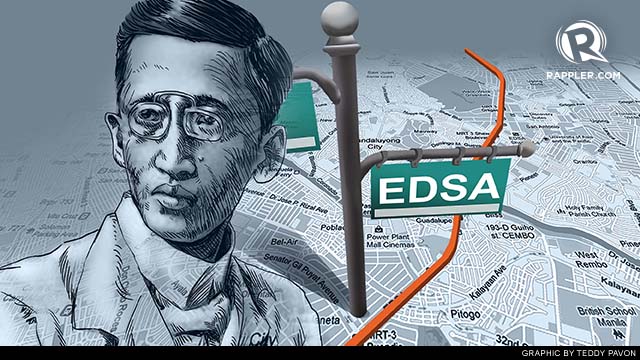 Not many people know that EDSA is actually a person. The letters stand for Epifanio Delos Santos Avenue. Born on April 7,1871, he was an eminent Filipino historian and scholar and was appointed director of the Philippine Library and Museum in 1925.
Not many people know that EDSA is actually a person. The letters stand for Epifanio Delos Santos Avenue. Born on April 7,1871, he was an eminent Filipino historian and scholar and was appointed director of the Philippine Library and Museum in 1925.
He was also associate editor of the revolutionary newspaper “La Independencia.” He died on April 18, 1928, a few days after turning 57.
Today, his avenue is the longest highway in the country with its 23.8 kilometers cutting through Caloocan, Quezon City, Mandaluyong, San Juan, Makati and Pasay. Its 12 lanes (with the MRT passing through) handle an average of 2.34 million vehicles everyday. It has even reached Hollywood with a cameo in “The Bourne Legacy.” -
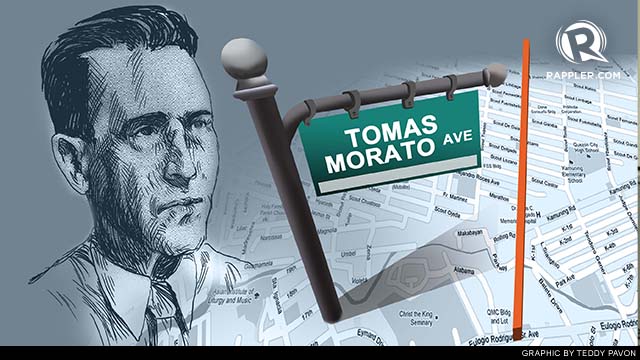 Tomas Eduardo Bernabeu Morato was the first mayor of Quezon City who served from 1939 to ’42. Born in Spain to Spanish parents on July 3, 1887, he became a Filipino citizen after our country gained independence.
Tomas Eduardo Bernabeu Morato was the first mayor of Quezon City who served from 1939 to ’42. Born in Spain to Spanish parents on July 3, 1887, he became a Filipino citizen after our country gained independence.
The Tomas Morato we know today is a lively street full of restaurants, bars, specialty stores and artsy hang-outs. It was once called Sampaloc Avenue because of the many sampaloc trees growing in the area. -
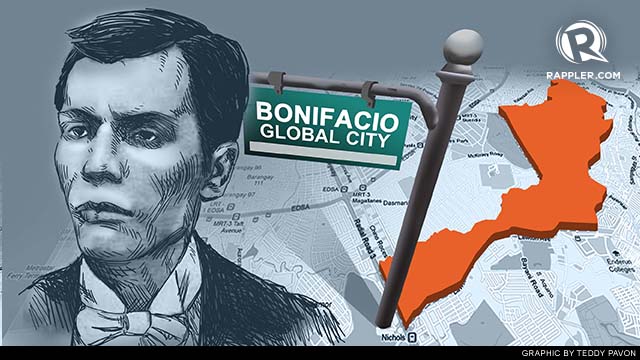 Though BGC is quite evidently named after revolutionary hero and Katipunan founder Andres Bonifacio, not many know that on its grounds once stood a fort.
Though BGC is quite evidently named after revolutionary hero and Katipunan founder Andres Bonifacio, not many know that on its grounds once stood a fort.
It was first Fort McKinley, acquired by the US government for military purposes during the American colonial period. After the Philippines gained independence, the property was given to the Philippine government. In 1957, it became the headquarters of the Philippine Army and was renamed Fort Andres Bonifacio.
Today, that fort is “The Fort” or BGC, a stylish home to modern apartments and commercial buildings, chic restaurants, parks and shopping centers. -
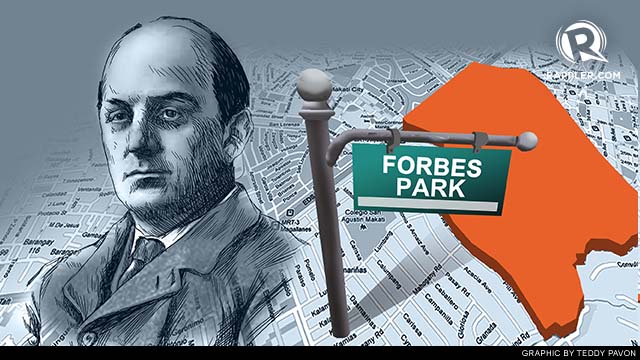 William Cameron Forbes was the highest American official in the Philippines in the early years of American colonization. Born on May 21, 1870, he was governor-general of the country from 1908 to 1913. Before then, he was the Commissioner of Commerce and Police from 1904 to 1908.
William Cameron Forbes was the highest American official in the Philippines in the early years of American colonization. Born on May 21, 1870, he was governor-general of the country from 1908 to 1913. Before then, he was the Commissioner of Commerce and Police from 1904 to 1908.
The famous Forbes Park, a gated subdivision for wealthy Filipinos, was established in the 40s. Today, it retains its reputation for exclusivity and swankiness. -
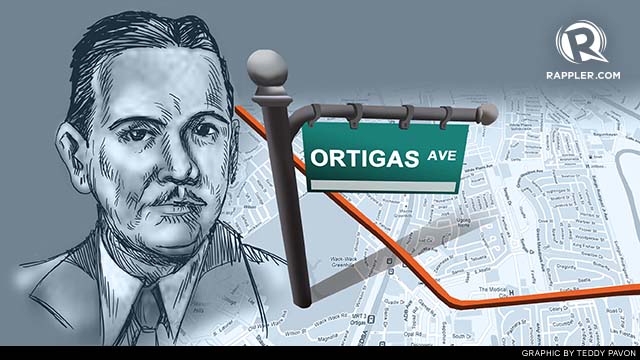 Before its current name, Ortigas Avenue was the “Hacienda de Mandeloyon,” a 4,033-hectare estate that belonged to the Augustinian friars during the Spanish colonial period.
Before its current name, Ortigas Avenue was the “Hacienda de Mandeloyon,” a 4,033-hectare estate that belonged to the Augustinian friars during the Spanish colonial period.
The virtual wasteland of wild grass was then sold to Francisco Ortigas (known then as Don Paco) and several other associates including former Philippine president Manuel L. Quezon.
It was then turned over to Ortigas & Company, spearheaded by Francisco Ortigas Jr. who turned the grassy expanse into a collection of residential and commercial high-rises, malls, schools and offices.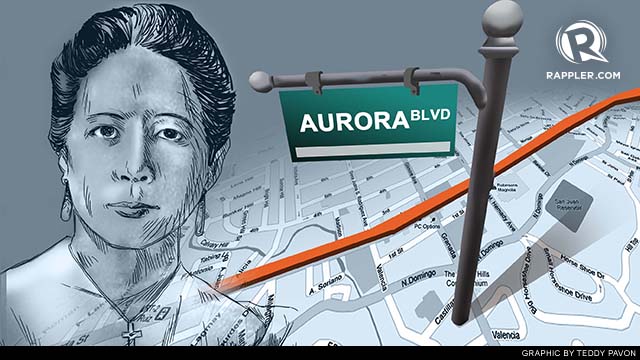 Aurora is Aurora Antonia Aragon Quezon, the wife of the 2nd president of the Philippines, Manuel L. Quezon. Aside from once being the first lady, Doña Aurora was the first chairperson of the Philippine Red Cross. She was a fierce advocate of women’s suffrage in the Philippines.
Aurora is Aurora Antonia Aragon Quezon, the wife of the 2nd president of the Philippines, Manuel L. Quezon. Aside from once being the first lady, Doña Aurora was the first chairperson of the Philippine Red Cross. She was a fierce advocate of women’s suffrage in the Philippines.
After President Quezon died of tuberculosis in 1944, Aurora and her daughter moved to California and served as Red Cross nurses.
Tragically, both mother and daughter were assassinated on April 28, 1949 while on their way to Baler to inaugurate the Quezon Memorial Hospital. Filipinos can honor her memory on February 19, her 125th birth anniversary. This famous square is named after Enrique Mendiola, an educator and textbook author who was born on May 3, 1859 in San Miguel, Manila.
This famous square is named after Enrique Mendiola, an educator and textbook author who was born on May 3, 1859 in San Miguel, Manila.
He founded the La Invencion de la Santa Cruz School in Ongpin Street which was considered one of the best Filipino-supervised schools during the latter part of the Spanish colonial period and the early years of American colonization.
He was a prolific writer of textbooks about grammar and history. He was one of the first Filipinos appointed to the University of the Philippines board of regents.
The square and bridge named after him have figured prominently in our nation’s history. Aside from being home to schools of the University Belt, it has been the site of violent protests. It was the scene of the Mendiola Massacre (1987) and the Battle of Malacañang (1970).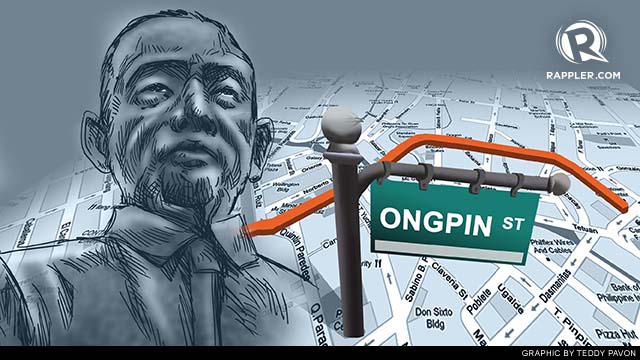 The famous street in Chinatown, Binondo known for its Chinese food restaurants, bakeshops (the best hopia are here!) and specialty stores is named after a rich Chinese businessman who funded the Philippine revolutionary movement.
The famous street in Chinatown, Binondo known for its Chinese food restaurants, bakeshops (the best hopia are here!) and specialty stores is named after a rich Chinese businessman who funded the Philippine revolutionary movement.
Don Roman Ongpin founded the store “El 82” which sold art supplies. Its patrons included artists like Juan Luna, Felix Resurreccion Hidalgo, Fabian dela Rosa and Fernando Amorsolo. When the revolution was brewing, he allowed his store to be used as an outlet for propaganda materials. He back up the revolutionaries with funds, food, rifles and ammunition.
All this while he served as the colonial government’s “teniente de Mestizos de Binondo,” literally “Lieutenant of the Half-breeds of Binondo.”
In former days, Ongpin Street was called Sacristia after the sacristy entrance of Binondo Church which faces the street.
This street was the same one through which Crisostomo Ibarra walked with the old Teniente in Jose Rizal’s “Noli Me Tangere.”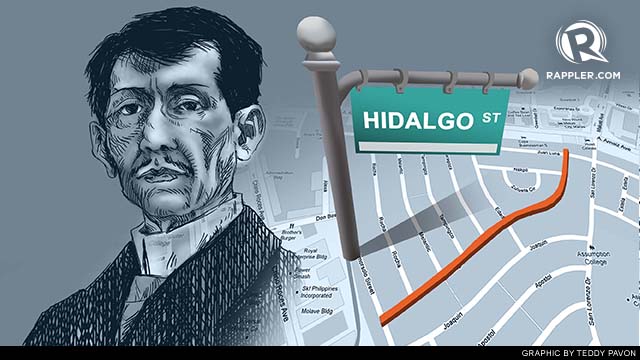 Felix Resurreccion Hidalgo, the man behind this street’s name, was one of the foremost Filipino painters in the 19th century. He was a contemporary of Juan Luna, Jose Rizal and other ilustrados who went to Europe for cultural enlightenment.
Felix Resurreccion Hidalgo, the man behind this street’s name, was one of the foremost Filipino painters in the 19th century. He was a contemporary of Juan Luna, Jose Rizal and other ilustrados who went to Europe for cultural enlightenment.
Hidalgo achieved fame along with Juan Luna after sweeping European painting competitions. Not least in his achievements was deserving praise from national hero Jose Rizal who once said, “In the painting of Hidalgo throbs the purest of sentiment, an idealized expression of melancholy, of beauty and weakness victimized by brute force.” It is fitting that Hidalgo Street is named after a man of beautiful imagery. Today, the street is home to camera and photography stores where lovers of the image still gather.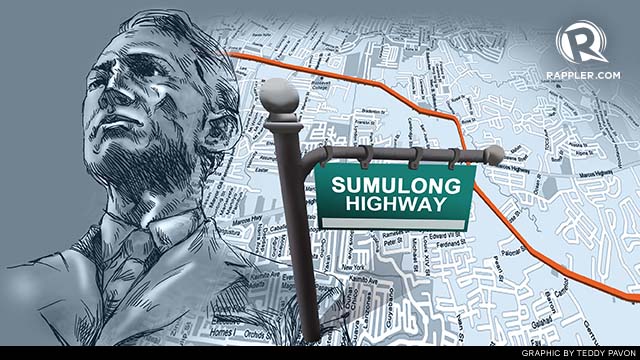 Sumulong is none other than Juan Sumulong, the “Brains of the Opposition” while Manuel Quezon was rising to power during the Commonwealth period. He was also a senator famous for his heated debate with then Senate President Manuel Quezon regarding amendments to the Corporation Law, a law defining corporations and how they are to be organized and led.
Sumulong is none other than Juan Sumulong, the “Brains of the Opposition” while Manuel Quezon was rising to power during the Commonwealth period. He was also a senator famous for his heated debate with then Senate President Manuel Quezon regarding amendments to the Corporation Law, a law defining corporations and how they are to be organized and led.
He also authored the law creating the gasoline tax and was firmly against the Hare-Hawes Cutting Act with its provision that the US would continue to have sovereignty over their military bases in the Philippines even after our country’s independence. Sumulong Highway, built in the 1960’s, connects Marikina and Antipolo. It is one of the main access roads to the Shrine of Our Lady of Peace and Good Voyage, one of the most visited shrines in the Philippines.